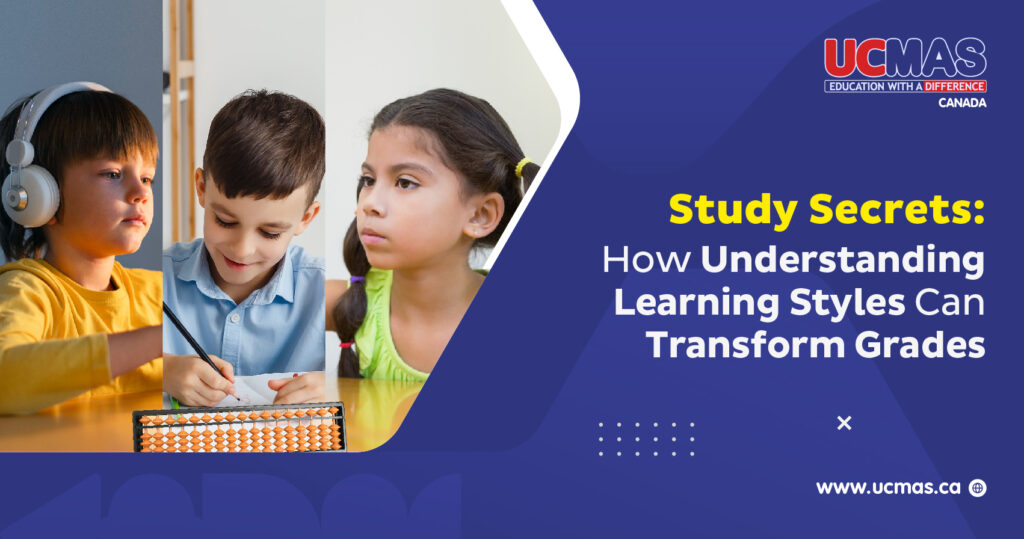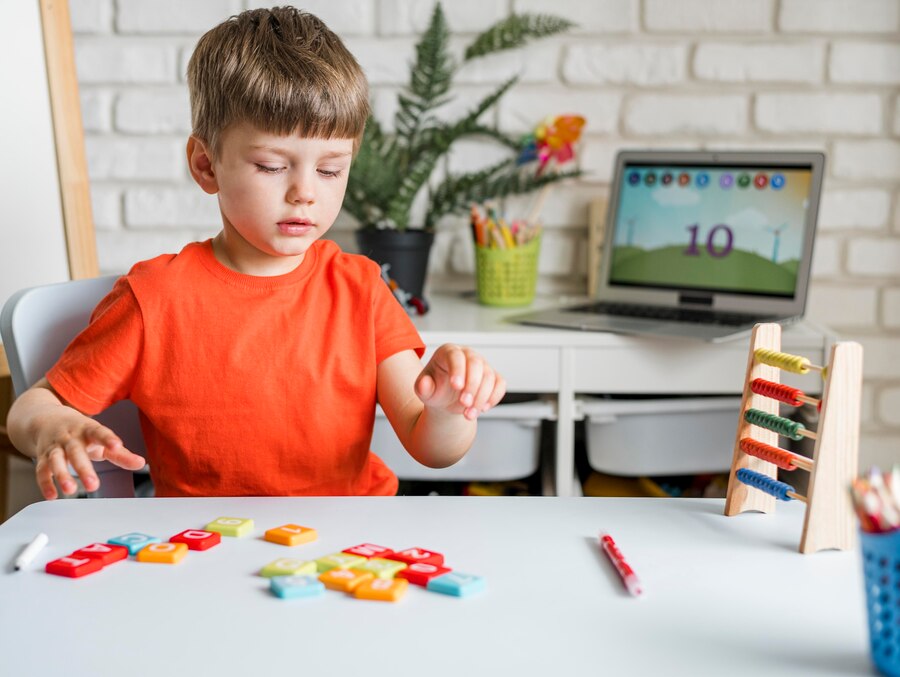
In the world of education and learning, one size never fits all. Every child possesses individual learning styles, preferences, and strengths. Recognizing and nurturing these individual differences is the cornerstone of effective education.
As parents and educators, we strive to give our children the best chance at a fruitful educational journey. To help your child succeed academically and achieve overall development, it is crucial to understand how your child learns best. This blog aims to help you understand your child’s preferred learning styles by giving you a detailed overview of the visual, auditory, and kinaesthetic modes of learning used at UCMAS learning centre.
The First Step: Understanding Your Child’s Needs
It’s essential to recognize that every child is unique and has their own preferred way of processing information. Some children may excel in traditional classroom settings, while others may thrive on visual or hands-on learning methods. By understanding and respecting these individual preferences, parents and educators can create tailored learning experiences that cater to each child’s strengths and weaknesses.
Visual, Auditory, and Kinaesthetic (VAK) Learning Styles
The VAK (Visual, Auditory, Kinaesthetic) model categorizes learning preferences into three main modes: visual, auditory, and kinaesthetic. Visual learners absorb information best through visual stimuli such as images, diagrams, and written text. Auditory learners, on the other hand, prefer learning through listening and verbal instructions. Kinaesthetic learners thrive in tactile experiences, preferring hands-on activities and movement to solidify their understanding. Let’s understand these learning styles in detail.

1. Visual Learning Style
Visual learners understand the world through their eyes, relying on visual aids and images to comprehend information. In most educational settings like UCMAS, visual learning is fostered through activities that use visual aids such as pictures, charts, videos, flashcards, or the physical abacus. By engaging with these visual tools, students develop the ability to mentally manipulate numbers and visualize mathematical concepts, paving the way for proficiency in mental math. For example, the ongoing use of the physical abacus helps students visualize the beads and their positioning, facilitating a deeper understanding of mathematical operations.
– 4 signs your child is a Visual Learner.
- They demonstrate an interest in arts and crafts.
- They love reading books and other material.
- They learn while watching videos and remember dialogues from movies.
- They have good observation skills and memory.
2. Auditory Learning Style
Auditory learners thrive in environments rich with sounds and verbal communication. In the UCMAS math program, auditory learning is honed through activities that involve listening and verbal instruction. For instance, students calculate rapidly by listening to numbers and train their auditory processing skills to work at high speeds.
Additionally, dictation exercises, where students listen to and write down jumbled words or numbers, further strengthen their auditory learning style. By harnessing the power of sound, auditory learners can sharpen their ability to process and retain information effectively.
– 4 signs your child is an Auditory Learner.
- They like to talk
- They love music, singing, and playing instruments.
- They learn by making jingles of the content.
- They prefer listening to instructions, rather than reading them.
3. Kinaesthetic Learning Style
Kinaesthetic learners learn best through hands-on experiences and physical movement. At the UCMAS math program, this learning style is engaged through activities that involve tactile engagement and body movement. For instance, the use of the abacus requires physical manipulation of beads, providing kinaesthetic learners with a tangible tool to represent and calculate numbers. Similarly, activities like speed writing stimulate kinaesthetic learning by encouraging fluid movements and coordination. By incorporating tactile and kinaesthetic elements into the learning process, students can reinforce their understanding of mathematical concepts through physical engagement.
– 4 signs your child is a Kinaesthetic Learner.
- They prefer activities such as running, swimming, dancing, and other sports.
- They have great hand-eye coordination and quick reactions.
- They use gestures while talking and explaining.
- They tend to fidget while learning as they can never sit still.
Benefits of Catering to Different Learning Styles
By embracing the diversity of learning styles and tailoring instruction to accommodate them, educators can unlock numerous benefits for their students. Firstly, catering to individual learning preferences enhances student engagement and motivation. Children are more likely to be invested in activities that resonate with their preferred mode of learning.
Additionally, addressing multiple learning styles promotes holistic learning, allowing students to approach problems from different perspectives and help them understand through varied experiences.
Moreover, accommodating diverse learning styles fosters inclusivity and equity in education, ensuring that all students have the opportunity to thrive regardless of their cognitive preferences.
The UCMAS Learning Style
At UCMAS, we understand that every child learns differently through a dominant and a secondary learning style. Our Abacus math program is designed to develop these learning styles in every class children attend at UCMAS.
Even the UCMAS National Competitions are thoughtfully designed having different categories to help children further enhance their learning skills. In the listening competition category, students have to focus and listen to high-speed math problems being called out. In the visual competition category, they see math problems on a big screen and solve them quickly. All the above math problems are solved by touching and moving the beads of the Abacus with their fingertips, which helps them enhance their kinesthetic learning ability.
The UCMAS abacus math program is crafted to foster a genuine enthusiasm toward math and overall learning for kids. Your child is presented with opportunities to experiment with different learning styles that activate both logical and creative thinking.
Introduce your child to the thrilling world of the abacus math program with UCMAS. Their math adventure awaits, enroll now!





